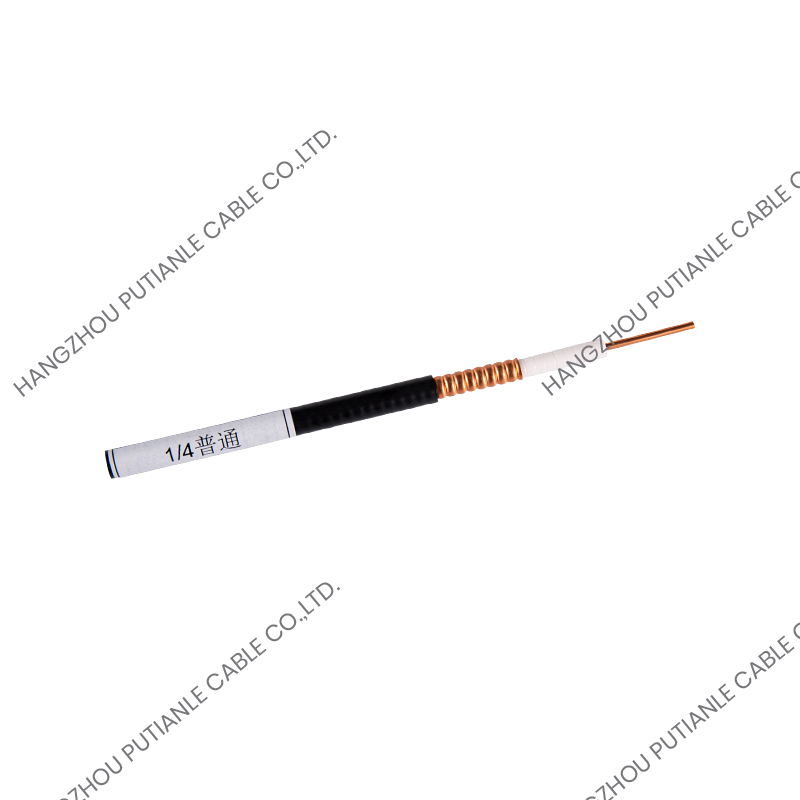In modern communications, power transmission and data networks, cables are carriers of information and energy transmission, and their performance directly affects the efficiency and stability of the entire system. As a high-performance transmission medium, low-loss cables are becoming an important choice for various industries with their lower energy loss and higher signal integrity.
The core advantage of low-loss cables lies in their extremely low signal attenuation characteristics. By using high-quality conductor materials such as high-purity copper or silver and optimizing the cable structure design, the energy loss caused by resistance and dielectric loss can be significantly reduced. This allows the signal to maintain high strength and clarity over a longer distance.
In high-frequency environments, electromagnetic interference (EMI) is one of the main factors affecting signal quality. Low-loss cables are usually equipped with multiple shielding layers, such as aluminum foil shielding, braided shielding or composite shielding, to effectively block external interference and prevent signal leakage.
Low-loss cables can support a wider frequency range and are suitable for a variety of application scenarios from low frequency to high frequency. This feature makes it an ideal choice for fields such as 5G communications, satellite communications and radar systems.
High-quality insulation materials and a strong outer sheath give low-loss cables excellent weather resistance and aging resistance, and they can maintain stable performance even in harsh environments.

The production of low-loss cables involves multiple complex steps, and each link plays a vital role in the performance of the final product:
The conductor is the core part of the cable, and its material and purity directly affect the transmission efficiency. High-purity oxygen-free copper (OFC) and silver-plated copper are the most commonly used conductor materials because they have low resistivity and excellent conductivity.
The role of the insulation layer is to isolate the conductor and reduce dielectric loss. Low-loss cables usually use polytetrafluoroethylene (PTFE), foamed polyethylene (FPE) or other low dielectric constant materials to reduce energy loss during signal transmission.
Multi-layer shielding structure is an important feature of low-loss cables. For example, aluminum foil shielding can provide full coverage, while braided shielding enhances mechanical strength and anti-interference ability. Some high-end cables also combine multiple shielding methods to achieve the best effect.
The manufacture of low-loss cables requires highly precise equipment and technology. For example, laser welding is used to connect conductors to ensure that the resistance at the joint is minimized; automated production lines ensure product consistency and reliability.
In recent years, with the application of new materials and technologies, the performance of low-loss cables has been continuously improved. For example, nano-coating technology can further reduce surface roughness, thereby reducing signal reflection and scattering; intelligent monitoring technology allows real-time detection of cable status and improves maintenance efficiency.
Low-loss cables have been widely used in multiple industries due to their excellent performance:
Communications industry
In 5G base stations, fiber optic networks and satellite communications, low-loss cables can efficiently transmit high-frequency signals to meet the needs of high-speed data transmission.
Broadcasting and television
The broadcasting and television industry has extremely high requirements for signal quality. Low-loss cables can ensure the clarity of audio and video signals and avoid distortion and delay.
Medical equipment
Medical imaging equipment (such as MRI and ultrasound) requires high-precision signal transmission. Low-loss cables can provide stable and reliable connections to ensure the accuracy of diagnostic results.
Aerospace
The aerospace field has extremely demanding requirements on the weight, durability and performance of cables. Low-loss cables have become the first choice due to their lightweight and anti-interference capabilities.
Industrial automation
In industrial control systems, low-loss cables are used to connect sensors, controllers and actuators to ensure accurate transmission of real-time data.
Future Development Trends
With the advancement of science and technology and changes in market demand, the research and development direction of low-loss cables is developing in the following directions:
Support for higher frequencies
As communication technology moves towards the millimeter wave and terahertz frequency bands, low-loss cables need to be further optimized to adapt to higher frequency ranges.
Green and environmentally friendly materials
Environmentally friendly insulating materials and recyclable conductors will become the focus of future research and development to reduce the impact on the environment.
Intelligent and self-healing functions
Intelligent cables can monitor their own status in real time and warn of faults, while self-healing materials can automatically restore performance after damage and extend service life.
Low-loss cables have become an indispensable part of modern communications and energy transmission with their excellent performance and wide application prospects. In the future, with the continuous innovation of technology, this high-performance cable will surely show its value in more fields.


 中文简体
中文简体 English
English Español
Español














